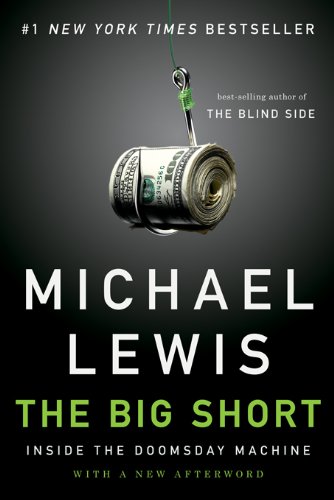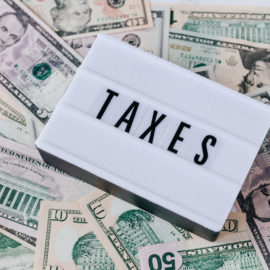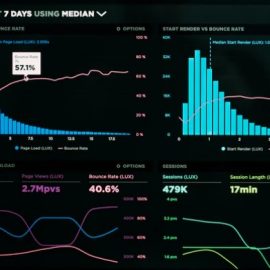

This article is an excerpt from the Shortform summary of "The Big Short" by Michael Lewis. Shortform has the world's best summaries of books you should be reading.
Like this article? Sign up for a free trial here .
What is a subprime mortgage? How did subprime lending contribute to the 2008 financial crisis?
A subprime mortgage is a home loan given to someone with a low credit score, indicating there’s a higher risk the borrower might default on the loan.
Learn why subprime mortgages are risky and how subprime loans contributed to the 2008 financial crisis.
What Is a Subprime Mortgage Loan?
In the 1980s and 1990s, a new industry, led by firms like The Money Store, was being established to provide financial products and services to the least-creditworthy Americans. It bore the characteristically euphemistic name of “specialty finance.”
The home loans issued to un-creditworthy borrowers became known as subprime mortgages. Although subprime mortgages still only represented a small fraction of the total U.S. credit market at this time, they received a boost from the nation’s growing income inequality. A more skewed income distribution created more and more potential subprime borrowers.
Why Did Subprime Lending Increase?
More people started receiving subprime mortgage loans because it benefitted the banks.
Banks were interested in selling mortgage-backed securities. Mortgage-backed securities brought the world of high finance into the lives of everyday Americans—even if they had no idea how much their homes had become chips on the table in the vast casino of global finance. A mortgage-backed security was made up of a bundle of home mortgages (often running into the thousands) that had been packaged together into a tradable asset. When an investor purchased one, she was purchasing the cash flows from the individual home mortgages that made up the security.
Because they resulted in higher interest, mortgages made to un-creditworthy borrowers could actually be worth more than mortgages made to qualified borrowers. Lenders had the incentive to lend to people who would couldn’t pay their mortgages when interest was low. This led to a huge increase in subprime lending.
Superficially, the structure of subprime mortgage bonds resembled that of the original mortgage bonds that had been composed of mortgages to creditworthy borrowers. Investors would purchase different tranches, or tiers, of the bonds, only now they were exposed to a much higher risk of actual defaults, because the bonds were composed of subprime mortgages.
Subprime Loans Appear to Benefit Americans
Subprime mortgage loan originators were happy to issue loans to almost anybody. Bad credit score? No problem! No income? Nothing to worry about! Past history of delinquency and/or foreclosure? Everyone deserves a second chance!
Subprime lenders were largely unconcerned with the risk of default. With the price of their homes always rising, borrowers would always be able to refinance easily. Moreover, the subprime lenders weren’t keeping the loans on their books. Through mortgage bonds, the subprime mortgages they had issued to risky borrowers could be bundled, packaged, and sold off to other investors. Any risk of default would be their problem. These incentives contributed to a widespread degradation of lending standards across the mortgage industry, resulting in many subprime mortgage loans.
The Problem with Subprime Mortgage Loans
Despite the inherent irrationality of the subprime mortgage bond market, it continued to thrive and grow as the 1990s became the early 2000s. In the 1990s, the market was maybe $30 billion: a drop in the ocean of the global credit market. By 2005, there were $625 billion in subprime mortgage loans, $500 billion of which had been packaged into bonds.
Even more alarming, the quality of the underlying mortgage loans had only deteriorated over time. Seventy-five percent of the loans by this time were floating-rate or adjustable-rate. This meant that the borrowers received a low “teaser-rate” for the first two years or so of the mortgage, after which they would face rate increases and ever-larger payments (these latter were to become known as “balloon payments”). Of course, this meant that many borrowers would be unable to make their payments in just a few short years, which would, in turn, set off a wave of foreclosures. Although a few foreclosures were no big deal for investors, a large number would wipe out the value of the bonds made up of these subprime mortgages. The time bomb had already been planted.
But the subprime borrowers and the financial institutions still were unable to see what a dangerous game they were playing. A massive game of hot potato was taking hold of the financial system. Lenders had an incentive to make as many subprime loans as possible and immediately sell them off to big Wall Street firms. These firms would then package them into mortgage-backed securities and sell them off to unwitting investors. In this way, subprime loans were a major contributing factor in the leadup to the 2008 financial crisis.
In summary, what is a subprime mortgage? It’s a home loan given to someone with a low credit score, indicating there’s a higher risk the borrower might default on the loan. When subprime lending increased in the late 90s and early 2000s, many borrowers did default, and the resulting foreclosures started a domino effect that led to an economic crisis.
———End of Preview———

Like what you just read? Read the rest of the world's best summary of "The Big Short" at Shortform . Learn the book's critical concepts in 20 minutes or less .
Here's what you'll find in our full The Big Short summary :
- How the world's biggest banks contributed to the 2008 financial crisis, greedily and stupidly
- How a group of contrarian traders foresaw the bubble popping, and made millions from their bets
- What we learned from the 2008 crisis - if anything






